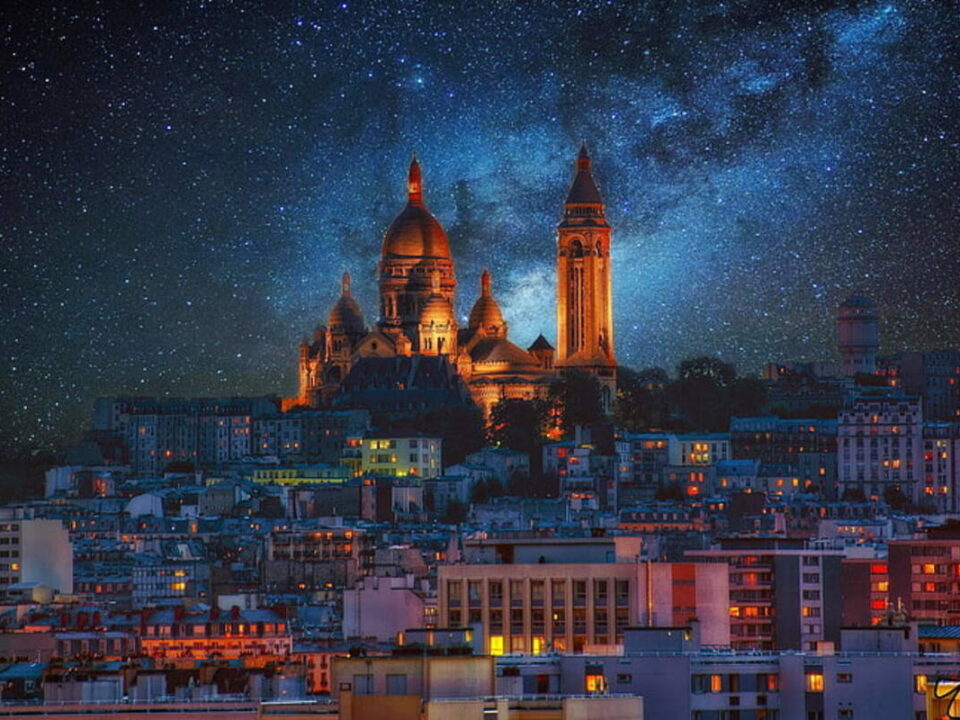Immerse Yourself in Artistic Brilliance: The Ultimate Guide to Musée d’Orsay
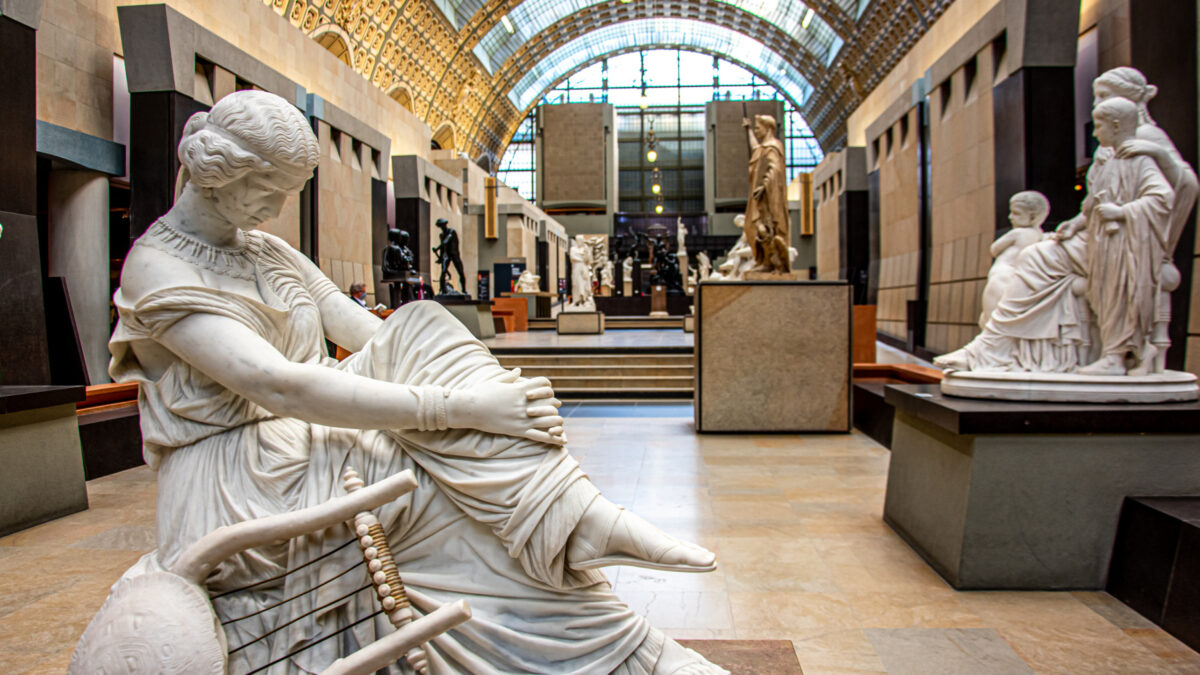
Immerse Yourself in Artistic Brilliance: The Ultimate Guide to Musée d’Orsay
Welcome to Musée d’Orsay, a treasure trove of art and culture located in the heart of Paris. Renowned for its extensive collection of Impressionist and Post-Impressionist masterpieces, this iconic museum is a must-visit for any art enthusiast. Set within a stunning Beaux-Arts railway station, Musée d’Orsay offers an unforgettable experience, blending art, history, and architectural beauty. This comprehensive guide provides everything you need to know for an enriching visit to Musée d’Orsay, including its history, key collections, unique features, and practical information for tourists.
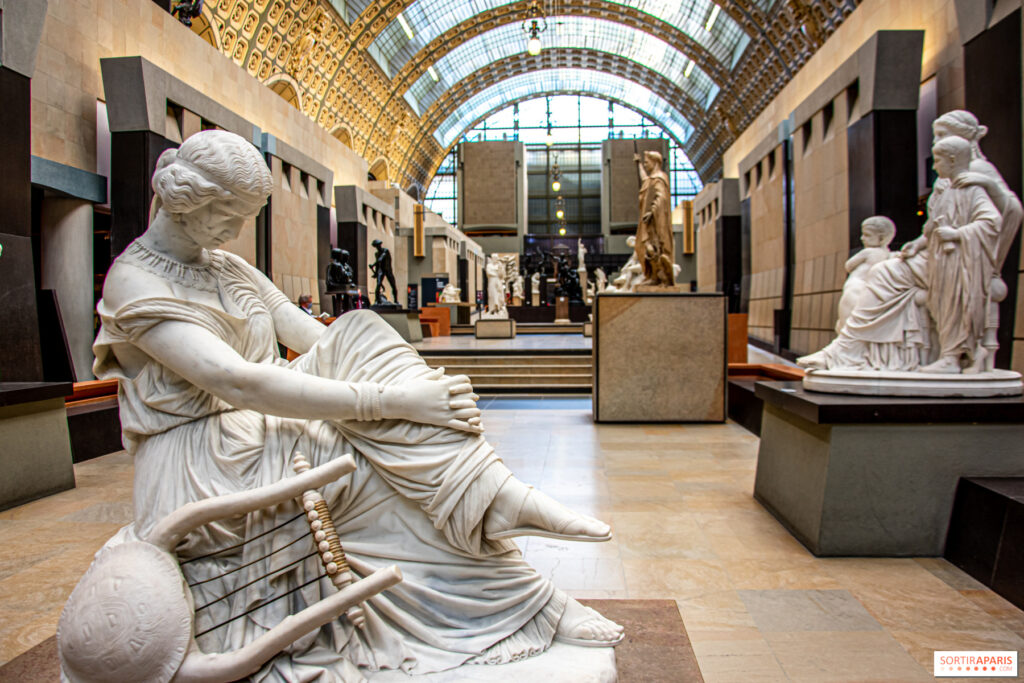
A Glimpse into the History of Musée d’Orsay
From Railway Station to Museum
Musée d’Orsay is housed in the former Gare d’Orsay, a Beaux-Arts railway station built for the 1900 Exposition Universelle (World’s Fair) held in Paris. Designed by architect Victor Laloux, the station served as a terminal for the Compagnie d’Orléans, facilitating travel to southwestern France.
Transformation into a Museum
By the 1970s, Gare d’Orsay had become obsolete for modern train services, leading to plans for its demolition. However, the French government decided to preserve the building and transform it into a museum dedicated to 19th and early 20th-century art. The museum officially opened its doors on December 1, 1986, following extensive renovations led by architects Pierre Colboc, Renaud Bardon, and Jean-Paul Philippon.
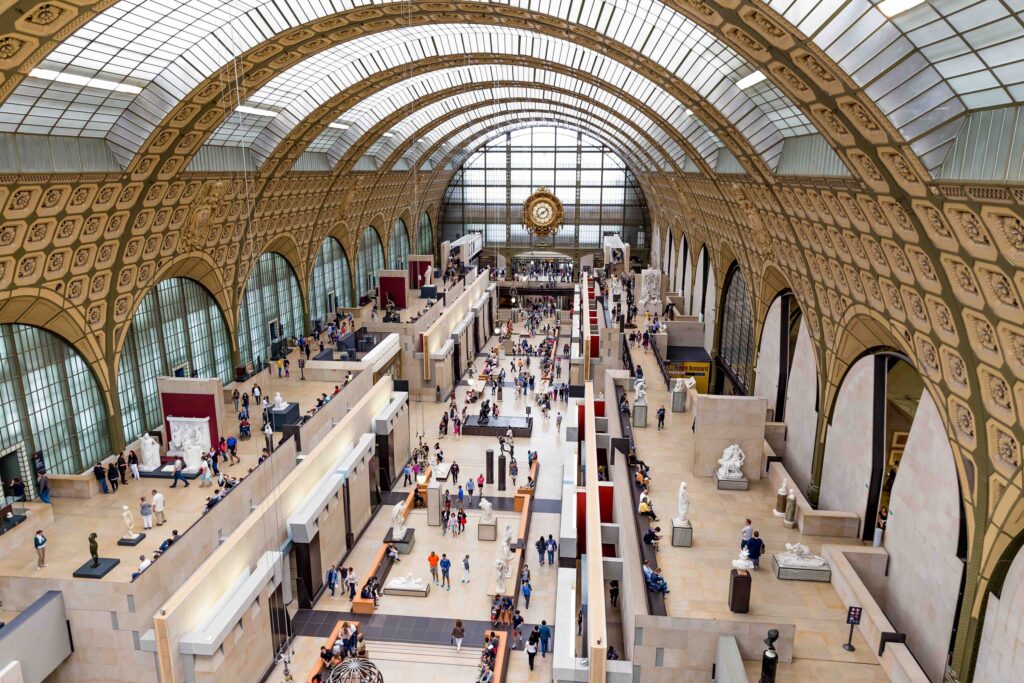
Key Collections of Musée d’Orsay
Impressionism
Musée d’Orsay boasts one of the world’s most comprehensive collections of Impressionist art. This movement, characterized by its emphasis on light, color, and everyday scenes, revolutionized the art world in the late 19th century.
- Claude Monet: Explore works by Claude Monet, including his famous series of water lilies and haystacks, which showcase his mastery of capturing light and atmosphere.
- Pierre-Auguste Renoir: Admire Renoir’s vibrant depictions of Parisian life, such as “Dance at Le Moulin de la Galette” and “Luncheon of the Boating Party.”
- Edgar Degas: Discover Degas’ evocative paintings and sculptures of ballet dancers, racehorses, and everyday moments, reflecting his keen observational skills.
Post-Impressionism
The museum’s Post-Impressionist collection features groundbreaking works by artists who built upon and reacted against Impressionism, paving the way for modern art.
- Vincent van Gogh: Marvel at Van Gogh’s expressive use of color and bold brushstrokes in masterpieces like “Starry Night Over the Rhône” and “Bedroom in Arles.”
- Paul Gauguin: Delve into Gauguin’s vivid and exotic paintings inspired by his travels to Tahiti, including “Where Do We Come From? What Are We? Where Are We Going?”
- Georges Seurat: Appreciate Seurat’s innovative pointillism technique in works such as “A Sunday Afternoon on the Island of La Grande Jatte.”
Symbolism
Symbolism emerged in the late 19th century as a reaction to realism and naturalism, emphasizing imagination, dreams, and emotions.
- Gustave Moreau: Explore Moreau’s mystical and dreamlike compositions, filled with mythological and allegorical themes.
- Odilon Redon: Immerse yourself in Redon’s fantastical and surreal works, where he delves into the realms of the subconscious and the imaginary.
Art Nouveau
Musée d’Orsay’s collection includes exceptional examples of Art Nouveau, a decorative arts movement that flourished at the turn of the 20th century.
- Hector Guimard: Discover Guimard’s elegant and organic designs, including furniture, architectural elements, and the iconic entrances to the Paris Métro.
- Émile Gallé: Admire Gallé’s exquisite glasswork, characterized by its intricate floral motifs and innovative techniques.
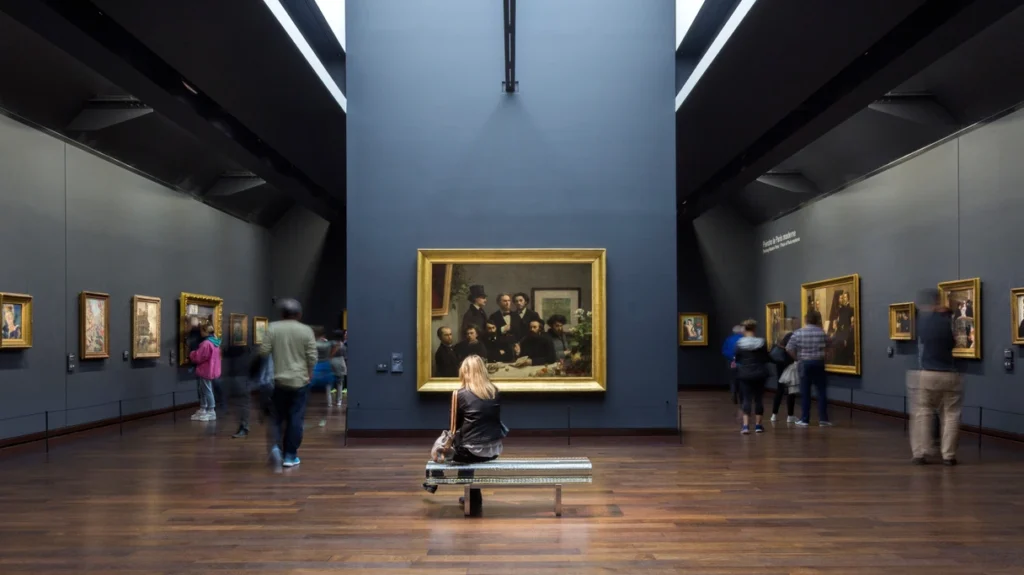
Unique Features of Musée d’Orsay
Architectural Splendor
Musée d’Orsay’s setting within the former Gare d’Orsay is a masterpiece in itself, blending the grandeur of Beaux-Arts architecture with the functionality of a modern museum.
- Central Nave: The central nave, originally the station’s main concourse, now serves as a stunning exhibition space with its high ceilings and expansive windows.
- Clock Facade: The museum’s iconic clock facade offers panoramic views of the Seine River and Parisian landmarks, providing a perfect backdrop for photographs.
The Grandeur of the Main Hall
The main hall of Musée d’Orsay is a breathtaking space that showcases the building’s architectural grandeur and provides a dramatic setting for the museum’s collections.
- Iron and Glass Roof: The soaring iron and glass roof floods the hall with natural light, creating a luminous and airy atmosphere.
- Marble Statues: The hall is adorned with elegant marble statues, adding to its majestic ambiance and highlighting the museum’s commitment to both fine and decorative arts.
The Decorative Arts Collection
Musée d’Orsay houses an extensive collection of decorative arts, reflecting the opulence and innovation of the 19th and early 20th centuries.
- Furniture and Design: Explore exquisite examples of furniture and design, including pieces by renowned designers such as Émile Gallé, Hector Guimard, and Louis Majorelle.
- Ceramics and Glassware: Admire the intricate ceramics and glassware that showcase the artistry and craftsmanship of the Art Nouveau movement.
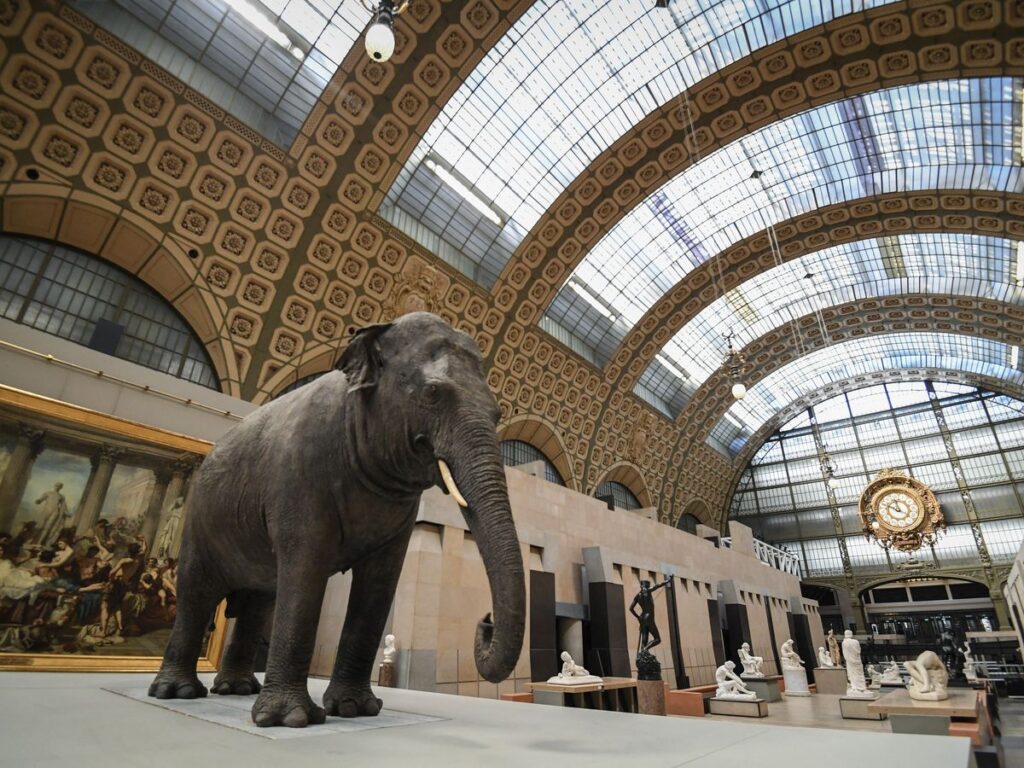
Special Exhibitions and Events
Rotating Exhibitions
In addition to its permanent collections, Musée d’Orsay hosts rotating exhibitions that delve into various aspects of art and culture.
- Thematic Exhibitions: These exhibitions explore specific themes, movements, or artists, offering visitors fresh perspectives and new insights.
- Collaborations: The museum frequently collaborates with other institutions, bringing in exceptional works from around the world.
Educational Programs
Musée d’Orsay offers a range of educational programs designed to engage visitors of all ages and backgrounds.
- Guided Tours: Join guided tours led by knowledgeable docents who provide in-depth information about the museum’s collections and history.
- Workshops and Lectures: Participate in workshops and lectures that explore various aspects of art, history, and culture, enhancing your understanding and appreciation of the museum’s offerings.
Practical Information for Tourists
Getting There
Musée d’Orsay is conveniently located on the left bank of the Seine River, in the 7th arrondissement of Paris.
- By Metro: The nearest metro station is Solférino (Line 12), which is just a short walk from the museum.
- By RER: The museum is also accessible via the RER C line, with the Musée d’Orsay station located directly opposite the museum entrance.
- By Bus: Several bus lines, including numbers 24, 63, 68, 69, and 73, stop near the museum.
Opening Hours and Tickets
Musée d’Orsay is open to visitors year-round, but hours may vary depending on the season and special events. It’s advisable to check the official website for the most up-to-date information on opening times and ticket prices.
- Opening Hours: Generally, the museum is open from 9:30 AM to 6:00 PM, with extended hours on Thursdays until 9:45 PM. The museum is closed on Mondays.
- Tickets: Tickets can be purchased on-site, but it’s recommended to buy them online in advance to avoid long lines, especially during peak tourist season. Discounted tickets are available for students, seniors, and large groups.
Accessibility
Musée d’Orsay is committed to providing a welcoming and accessible experience for all visitors.
- Wheelchair Access: The museum is fully accessible to visitors with mobility issues, with elevators and ramps available throughout the building.
- Audio Guides: Audio guides are available in multiple languages, offering detailed information about the museum’s collections and history.
- Visitor Services: The museum provides various visitor services, including a coat check, stroller rentals, and accessible restrooms.
Tips for an Enjoyable Visit
Plan Your Visit
To make the most of your time at Musée d’Orsay, it’s helpful to plan ahead and prioritize the collections and exhibitions that interest you the most.
- Early Arrival: Arrive early in the day to avoid crowds and make the most of your visit.
- Museum Map: Pick up a museum map at the entrance to help navigate the extensive galleries and locate specific works of art.
- Combined Tickets: Consider purchasing a combined ticket that includes entry to both Musée d’Orsay and Musée de l’Orangerie, which houses an impressive collection of Impressionist and Post-Impressionist art.
Capture the Moment
Musée d’Orsay offers numerous opportunities for stunning photographs. Here are some tips to capture the best shots:
- Central Nave: The central nave provides a dramatic backdrop for photos, with its soaring ceilings and natural light.
- Iconic Clock: Don’t miss the chance to photograph the museum’s iconic clock facade, which offers panoramic views of Paris.
- Artworks: While photography is allowed in most areas of the museum, be sure to respect any restrictions and avoid using flash to preserve the artworks.
Must-See Highlights at Musée d’Orsay
“Olympia” by Édouard Manet
“Olympia” is one of Manet’s most controversial and groundbreaking works, depicting a reclining nude woman who gazes directly at the viewer. This painting challenged traditional representations of the female form and provoked significant debate upon its debut.
“Bal du Moulin de la Galette” by Pierre-Auguste Renoir
Renoir’s “Bal du Moulin de la Galette” captures a lively and joyful scene at a popular dance hall in Montmartre.
The painting is celebrated for its vibrant colors, dynamic composition, and the artist’s ability to convey movement and light.
“The Starry Night Over the Rhône” by Vincent van Gogh
Van Gogh’s “The Starry Night Over the Rhône” is a mesmerizing depiction of the night sky reflected in the waters of the Rhône River. The painting is characterized by its rich blues and yellows, and its expressive brushstrokes that convey a sense of wonder and tranquility.
“The Birth of Venus” by Alexandre Cabanel
Cabanel’s “The Birth of Venus” is a masterpiece of academic art, portraying the goddess Venus emerging from the sea. The painting’s idealized beauty and meticulous attention to detail exemplify the classical style that dominated the 19th-century French art scene.
Dining and Shopping at Musée d’Orsay
Dining Options
Musée d’Orsay offers several dining options, allowing visitors to enjoy a meal or a snack amidst their cultural exploration.
- Café Campana: Located on the fifth floor, Café Campana offers a stylish and modern setting with views of the Seine River. The menu features a selection of light meals, pastries, and beverages.
- Restaurant du Musée d’Orsay: The museum’s restaurant, situated on the first floor, provides a more formal dining experience with a menu that includes traditional French cuisine and seasonal specialties.
- Café de l’Horloge: Situated under the museum’s iconic clock, this café offers a range of refreshments, including sandwiches, salads, and desserts.
Museum Shops
Musée d’Orsay’s museum shops offer a wide selection of books, prints, gifts, and souvenirs inspired by the museum’s collections.
- Main Shop: The main shop, located near the entrance, features an extensive range of art books, exhibition catalogs, and high-quality reproductions of famous artworks.
- Boutique de l’Art Nouveau: This specialty shop focuses on items related to the Art Nouveau movement, including jewelry, home decor, and unique gifts.
Practical Tips for Visitors
Best Time to Visit
The best time to visit Musée d’Orsay is during the early morning or late afternoon, when the museum is less crowded. Weekdays, especially Tuesdays and Wednesdays, tend to be quieter than weekends.
- Seasonal Considerations: Spring and autumn are ideal seasons to visit, with mild weather and fewer tourists.
- Special Events: Be aware of special events and holidays that may affect access to the museum, such as national holidays and school vacations.
Guided Tours and Audio Guides
To enhance your visit, consider joining a guided tour or renting an audio guide.
- Guided Tours: The museum offers a variety of guided tours, including general tours that cover the highlights of the collection and specialized tours that focus on specific themes or artists.
- Audio Guides: Audio guides are available in multiple languages and provide detailed information about the museum’s collections and history.
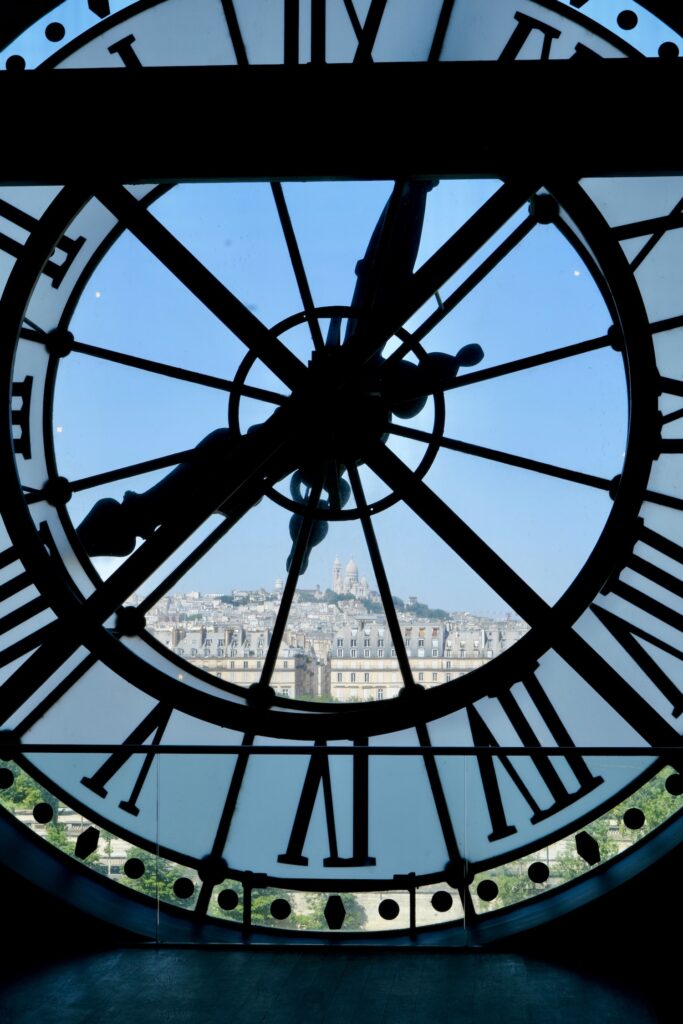
Respecting the Artworks
While visiting Musée d’Orsay, it’s important to respect the artworks and the museum environment.
- Photography: Photography is allowed in most areas of the museum, but be sure to respect any restrictions and avoid using flash to preserve the artworks.
- No Touching: Do not touch the artworks or lean against display cases, as this can cause damage.
- Quiet Atmosphere: Maintain a quiet and respectful atmosphere, allowing all visitors to enjoy the museum experience.
Conclusion
Musée d’Orsay stands as a beacon of artistic brilliance and cultural heritage, offering visitors an unparalleled journey through the masterpieces of the 19th and early 20th centuries. From its world-renowned Impressionist and Post-Impressionist collections to its stunning architectural setting, the museum provides an unforgettable experience for all who visit. Plan your trip to Musée d’Orsay and immerse yourself in the beauty, history, and charm of one of Paris’s most cherished cultural institutions. Embrace the opportunity to explore, discover, and create lasting memories in this iconic museum that embodies the essence of artistic innovation and excellence.


